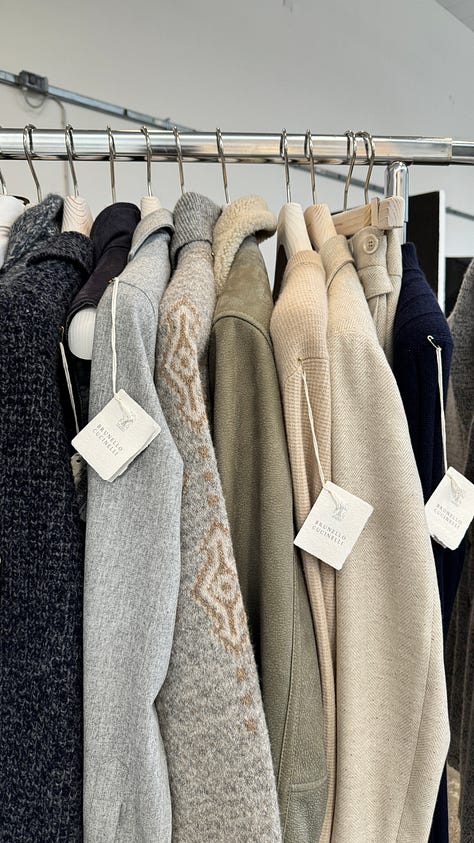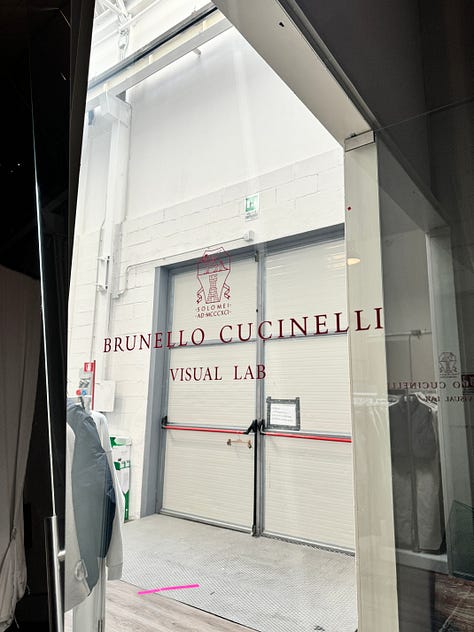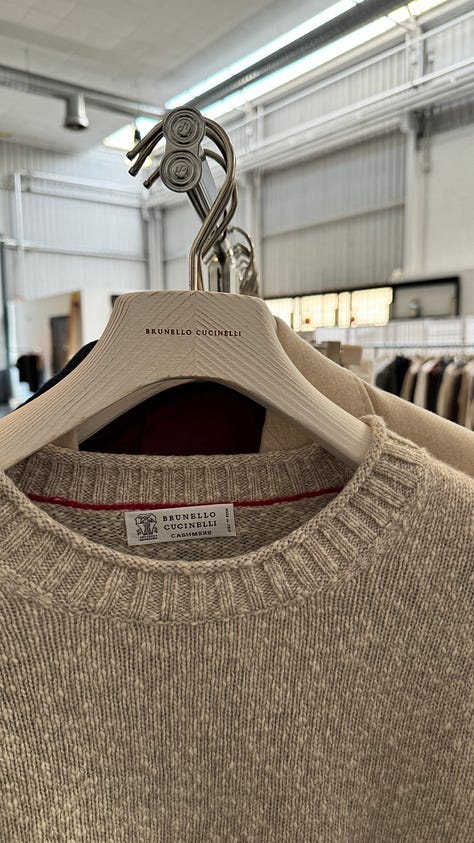The Architecture of Feeling: Touch
Touch is our first language — universal, yet so easily forgotten
Part 3 of 5. The Architecture of Feeling is a series of long-form essays exploring how the senses shape our health, culture, and daily experience. Each piece examines a single sense — its history, construction, cultural evolution, and biological logic.
The First Touch
I remember the first time I got to hug my parents following the Covid-19 lockdowns in 2020. After months of avoiding close human contact, it felt almost wrong — too close, too intimate, oddly dangerous. But after those strange initial moments, something in me gave way. My body sank and softened, my breath deepened. It felt like returning home, but literally and figuratively.
Touch is our first language. The skin develops sensory receptors in the womb before our eyes can focus, before our ears can make sense of sound. Yet as adults, we rarely think about it unless it’s missing. And even then, we can become so accustomed to existing without it that we forget how stabilising it can be until we’re reminded.
Interestingly, the body doesn’t register all touch the same way. There’s the living, reactive kind: a hug, a hand held, an animal’s weight on your lap — the kind that floods the body with oxytocin and quiets the nervous system. And there’s the architected kind: the deep seat of a chair, the soft drape of a cashmere pashmina, the cocoon of a blanket — inanimate, but capable of holding us in ways that can feel just as physiologically comforting, but in a different way.
We design constantly for sight and sound. But unless we’re literally buying a sofa, a throw or shopping for a friend’s newborn baby, we’re far less intentional about how touch impacts our day-to-day.
The Body’s Tactile Map
The skin is the body’s largest organ, lined with millions of tiny sensors tuned to pressure, texture, temperature, and stretch. With every passing moment, these sensors are sending information up the spinal cord to the brain, where it’s stitched into a living map of your body.
Let’s be clear — this isn’t just a record of where you’re being touched. It’s a constant update on how you exist in space. Information on whether you’re leaning to one side, gripping a coffee cup, or shifting your weight leg to leg in a queue. It’s why you can close your eyes and still point to your own knee.
Most of the time this sensory “map” runs quietly in the background. You put on a jumper in the morning and forget it’s there. Unless, of course, it’s that itchy Christmas jumper you drag out each year to appease your mum. That kind of irritation is impossible to tune out. The brain treats it as a warning — something on the skin might be harmful — so your nervous system keeps it front of mind until you scratch, shift, or take it off.
The same rule applies in the other direction. A sudden patch of warmth, the steady weight of a blanket, the brush of cashmere against your wrist — these register as safe, rewarding inputs. They cut through the noise and remind you of the present moment.
Every surface you touch, the armrest under your elbow, the curve of a handrail, the grain of a wooden table, is part of that sensory map. Most of it fades into the background, but when something changes — a new texture, an unexpected weight, a shift in temperature — the brain pulls it forward. What was automatic becomes conscious.
The Chemistry of Being Held
When touch is sustained and intentional, the kind of hug that lasts a little longer than expected, the body shifts gear. Oxytocin rises, cortisol falls, the heart steadies into a calmer rhythm. Studies show that affectionate touch with a loved one can lower blood pressure and even dampen inflammation (Uvnäs-Moberg et al., 2005; Light et al., 2005). What looks like a simple gesture from the outside is, on the inside, results in a cascade of physiological recalibration.
What sets living touch apart is its responsiveness. A cat shifts its weight until it finds the hollow of your lap. A friend’s hug tightens at just the right moment. A partner’s arm drapes, then readjusts, softening until it feels right for both of you. In the smallest of movements, the body recognises another body paying attention.
That reciprocity is what floods the body with oxytocin, lowers cortisol, steadies the heart. It’s why a lingering hug changes you in a way a weighted blanket can only approximate. Objects can hold us, but they never respond. In cultures where responsive touch is part of daily life — think Mediterranean greetings, Latin American families pressed together on a sofa — people consistently report lower loneliness and depression (Field, 2010).
But touch doesn’t always feel safe. 2020’s pandemic reminded us of that. In the early years of AIDS, and again during Covid, fear rewired how people reached for each other. Distance became protective — a public health strategy that saved lives in the short term, but had significant ripple effects on interpersonal interaction. For many, the withdrawal outlasted the risk. Researchers recently coined the term “skin hunger”, the craving for human contact that shows up as anxiety, sleeplessness and even weakened immune response (von Mohr et al., 2021).
This raises a wider point. Health is never just biology; it’s shaped by how we live together. Income, housing, education, clean air — all are recognised as determinants of health. Touch rarely makes that list, but its absence carries measurable costs. Loneliness is now linked with higher rates of cardiovascular disease, depression, even reduced life expectancy.
The body remembers what it missed. The harder question is whether our systems — medical, cultural, architectural — will start remembering too, and design for safe contact as part of everyday health, not just something we rediscover after crisis.
The Objects That Hold Us
Over eleven years of modelling, I’ve seen behind the scenes at world-renowned fashion houses from Versace to Balmain. But what stayed with me most was the six days I spent at Brunello Cucinelli’s headquarters in Solomeo last year. There, touch was given unusual importance, it’s almost revered. In the studio, I noticed how decisions turned on feel more than appearance. Cashmere swatches weren’t just checked for colour — they were handled, folded, stretched, weighed in the hand. What mattered was how the fabric carried itself, how it would sit against skin. Softness wasn’t an afterthought; it was treated as structure, as integral as the cut.



Wearing the clothes had the same effect. The weight of the fabrics, the cut and the movement of the pieces actually made me more aware of being in my body. Like they were wearing me as much as I wore them. I touched on this earlier: neuroscientists call this ‘sensory reactivation’. Novelty or quality breaking through the brain’s habit of tuning out familiar touch (Gibson, 1962). The material didn’t just feel good; it made me aware that I was feeling.
Weighted blankets work in a similar way. By applying steady pressure — what researchers call deep pressure stimulation — they calm the autonomic nervous system, reducing anxiety and improving sleep (Ackerley et al., 2015; Chen et al., 2020). They don’t reciprocate like a person or an animal, but the effect is strikingly similar: slower breath, steadier pulse.
I felt something similar earlier this year, after finally adding a Togo sofa to my living space — a piece I’d admired for years. Designed by Michel Ducaroy in the seventies, it has a way of holding you that’s different from any other furniture I’ve experienced. The seat draws you down, the folds catch your weight, and the longer you sit, the more your body seems to settle into itself. It’s a feeling so organic, you almost forget the seat is there at all.
Objects can’t return our touch, but they can set the conditions for calm. The designers who last are the ones who know this — that beauty alone isn’t enough, that true value lies in how something makes you feel in your own skin. You get to be your own hero; the object is merely a sidekick.
Bringing Tactility Back into the Everyday
We sometimes imagine touch as private. Something exchanged in intimacy or chosen through clothing. But in truth, it’s everywhere in the built environment, shaping us constantly. The problem is that most of these encounters are designed with priorities other than care or regulation.
Healthcare is a good example. Understandably, surfaces are chosen for sterility, not sensation: plastic chairs, metal rails, paper gowns. The goal is infection control, not comfort. Yet the body still reads those cold, slick, thin materials and reacts with tension. It’s a design decision that doesn’t account for the humanity of patients. Although granted, in this specific instance, the competing priorities are not exactly easy to balance.
In public space, tactility becomes a form of social control. Benches are made narrow, or angled to prevent anyone from hanging around too long. Anti-homeless architecture is touch design at its most explicit: a surface engineered to reject the body. We forget how radical the opposite would be — a bench with depth and curve, a material that warms in the sun, an invitation to stay.
Even in everyday objects, the same tension plays out. A ceramic mug, a mobile phone made from metal and glass, instinctively steadies the hand more than a flimsy cup or plastic flip phone. A handle with weight reassures; a sharp edge irritates every time you touch it. These appear to be minor details, but they accumulate into an atmosphere that either grinds or grounds you.
Touch is always being designed. The question is whether it’s with intention and to what end.
Closing Thoughts – Relearning the Language
What if touch were treated as infrastructure, as vital as clean air or safe water? We’d design for the hug, the handshake, the vibrational purr of a cat. For the deep seat of a chair that holds you longer than planned. For the weighted blanket that steadies the mind at night.
Because touch isn’t decoration. It’s how we learn that we belong — to each other, and to ourselves — whether we’re conscious of that fact in the moment or not.
The Architecture of Feeling: Sound
Part 2 of 5. The Architecture of Feeling is a series of long-form essays exploring how the senses shape our health, culture, and daily experience. Each piece examines a single sense — its history, construction, cultural evolution, and biological logic.











